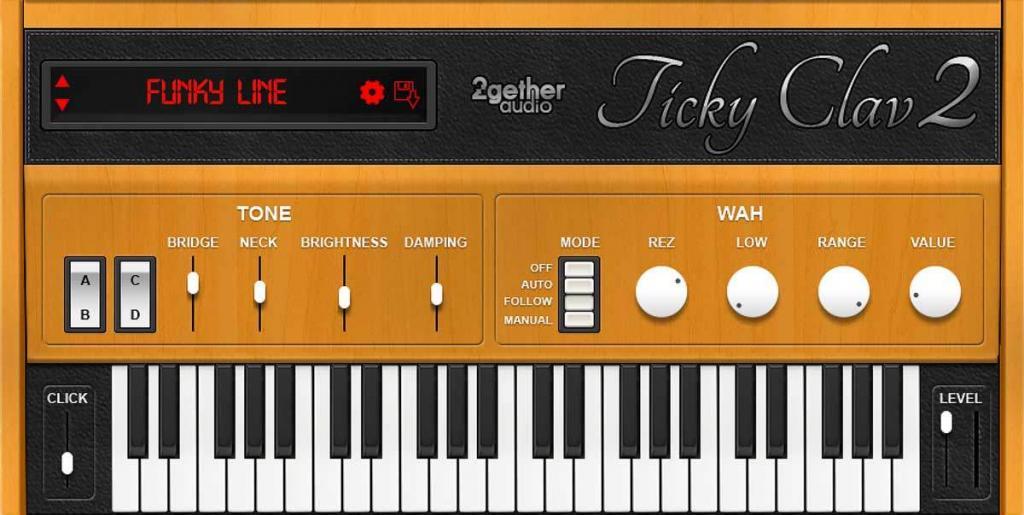Logic Pro X 10.5. Select version: Modifying this control will update this page automatically. Search the user guide Clear Search Table of Contents. Logic Pro User Guide. What’s new in Logic Pro. What’s new in Logic Pro 10.6. What’s new in Logic Pro 10.5. I just bought a Jamstack amp and it has me using the Tonebridge app. Unfortunately the tonebridge app doesn’t work with any of my guitars. When sound does come out, it’s very low and I have to turn the effect all the way to the max to get anything to come through but then when I play the demo it sounds perfect through the amp/app. By setting the buffer size and range, you can help your Mac understand how important Logic is at any time. To do this, go to Logic Pro X Preferences Audio This is the Audio Preference menu. Home to all things related to how Logic manages incoming and outgoing audio. Even though Logic Pro X offers a shredload of plugins that can make great guitar tones (or can be used creatively for distorted vocals for example), there's a whole other world of third-party guitar amp simulator plugins to explore. Here's an overview of some of the best free guitar amp.
Before proceeding, make sure to back up the Logic Pro app.
Try these steps in order
After trying each step below, test Logic Pro again to see if you've fixed your issue.
Restart your Mac
Update Logic Pro
Stonebridge Logic Pro X Reviews
Choose Apple menu > App Store, then click Updates in the toolbar. If a Logic Pro update is available, click the Update button to download and install it.
Check device or software compatibility
If you're using an external audio interface, MIDI interface, storage system, control surface, or plug-in not made by Apple, make sure that it’s compatible with the latest version of Logic Pro. Contact the manufacturer for support. If an update is available, follow the manufacturer’s instructions to update the device or software.
Use built-in audio with Logic Pro
If you’re using an external audio interface, try using the built-in audio on your Mac instead of the interface.
- Unplug your external audio interface from your Mac.
- Open Logic Pro, then choose Logic Pro > Preferences > Audio/MIDI > Devices.
- Choose Built-In Output from the Output Device pop-up menu.
- Choose Built-in Microphone (or Built-in Input, depending on your computer) from the Input Device pop-up menu.
- Open and play back a project that's been experiencing issues.
If the project opens and plays back properly, you might need to update or service your audio interface. Contact the manufacturer for support.
If you aren’t using an external audio interface, try bypassing third-party Audio Units plug-ins.
Open Logic Pro without audio input and output
- Open Logic Pro and immediately press and hold the Control key before a project opens.
- In the alert, click Don’t Launch.

If Logic Pro opens, you might need to update or service your external audio interface. Contact the manufacturer for support. It can also mean a third-party Audio Units plug-in might be damaged, or it might not be compatible with your version of Logic Pro. You can try bypassing plug-ins to troubleshoot your issue.
Bypass third-party Audio Units plug-ins
If you’re using Audio Units plug-ins, try bypassing or removing them.
Stonebridge Logic Pro X Software
Test with a new project
You can create a new project and test to check if the issue is with your project or Logic Pro app.
- If Logic Pro is open, quit the app.
- Open Logic Pro and create a new empty project.
- Add Apple Loops to the new project.
- Try to recreate the issue you were having. For example, if the project you're having an issue with uses a particular third-party plug-in, add it to the test project. If the problem reappears, the plug-in might be damaged or might need to be updated.
Test Logic Pro with a new user account
Create another user account on your Mac, then try to recreate the issue in the new user account. If the issue doesn't occur in the new user account, settings or files in the original account might be causing the issue.
Reset Logic Pro preferences
Stonebridge Logic Pro X Download
Resetting preferences doesn’t affect your project files, presets, or patches. However, you do lose any custom preference settings that you might have made.
- Choose Logic Pro > Preferences, and note any specific Logic Pro preference settings that you’ve made.
- Choose Logic Pro > Preferences > Reset All Preferences Except Key Commands.
After resetting preferences, open your project and try to reproduce the issue that you were experiencing. If the issue no longer occurs, open Logic Pro preferences and reapply your custom preference settings.
Delete Logic Pro preferences
- In Logic Pro, note any custom preference settings that you’ve made, and save any custom key commands you've created.
- Quit Logic Pro.
- In the Finder, choose Go > Go to Folder.
- Enter ~/Library/Preferences, then click Go.
- Remove the 'com.apple.logic10.plist' file from the Preferences folder.
- If you upgraded from Logic 9 or earlier to Logic Pro, also remove the 'com.apple.logic.pro' file.
- Restart your Mac.
After deleting preferences, open your project and try to reproduce the issue that you were experiencing. If the issue no longer occurs, choose Logic Pro > Preferences, reapply your custom settings, and import your custom key commands.
Reinstall Logic Pro
Delete Logic Pro, then redownload and reinstall it. Libraries won't be affected
If you're restoring Logic Pro from a backup, you can either drag it from its storage location to your Applications folder, or you can restore it from a Time Machine backup.
Still not working?
Learn more
- Avoid system overloads while recording or playing back.
- Minimize the amount of latency (delay) you experience while recording audio or playing software instruments.
